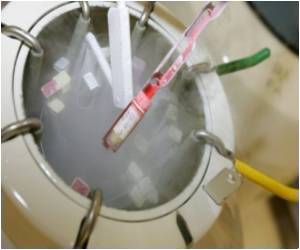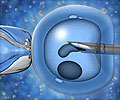Exactly how a human egg captures an incoming sperm to begin the fertilisation process has been discovered by an international team of scientists.

The international team, from the University of Missouri, the University of Hong Kong, Academia Sinica in Taiwan and Imperial College London, discovered that the sugar chain known as the sialyl-lewis-x sequence (SLeX) is highly abundant on the surface of the human egg. After experimenting with a range of synthesised sugars in the laboratory they went on to show that SLeX specifically binds sperm to an egg, and tested their findings using the outer coats of unfertilised "non-living" human eggs.
"This exciting research is providing the first insights into the molecular events occurring at the very beginning of human life. The details we've discovered here fill in a huge gap in our knowledge of fertility and we hope they will ultimately help many of those people who currently cannot conceive," said Professor Anne Dell CBE FRS FMedSci from the Department of Life Sciences at Imperial College London, who led the team that discovered the SLeX sugars on the egg surface.
"Unravelling the composition of the sugar coat that shrouds the human egg is the culmination of many years of painstaking research by my mass spectrometry colleagues at Imperial. This endeavour was an enormously difficult task because human eggs are very tiny - about the size of a full stop - so we didn't have much material to work with," added Dell.
A sperm 'recognises' an egg when proteins on the head of the sperm meet and match a series of specific sugars in the egg's outer coat. Once a successful match has been made, the outside surfaces of the sperm and egg bind together before they merge and the sperm delivers its DNA to the inside, fertilising the egg.
The study has been detailed in the journal Science.
Source-ANI











